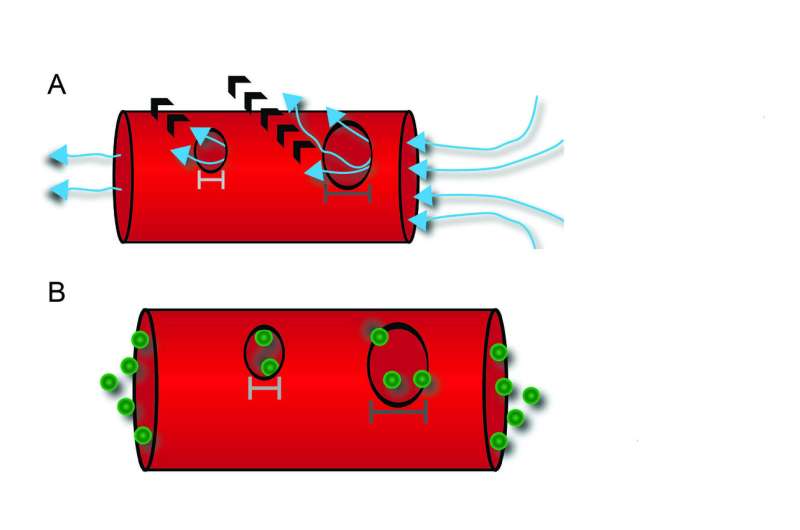Common steroid could soften up tumors for chemo

A common drug used to alleviate side effects of cancer treatment may also make the treatment more successful if given beforehand, report a consortium of research institutions including the University of Connecticut.
Dexamethasone, a steroid often given to decrease swelling and nausea, and relieve side effects of chemotherapy treatments for cancer, may also enhance the effectiveness of the chemotherapy itself, the researchers reported in ACS Nano.
Cancerous tumors tend to grow abnormal blood vessels. Squished, twisted, and compressed, these blood vessels inside tumors also tend to be leaky.
"This creates low pressure in the blood vessel, while the tumor tissue has high pressure. And you can't flow from low to high pressure," says Matthew Stuber, UConn assistant professor of chemical and biological engineering, and study author. The low pressure in the blood vessels makes it hard for the chemotherapy drugs to penetrate the interior of the tumor.
The most important factors determining how far the chemotherapy drugs get inside the tumor are the fluid pressure inside the blood vessels, and the pressure of the tumor tissue itself. Stuber and his colleagues did the math, and figured out how much the pressures would have to change relative to each other for the chemotherapy to destroy more of the tumor.
Stuber and his lab, the Process Systems and Operations Research Laboratory, applied data from their co-author's experiments to an established computer model of how fluid and molecules flow through a tumor. The data they used for the model came from videos taken through microscopes that showed how chemotherapy penetrated tumors. These pictures showed that most of the chemotherapy attacked the outer edges of the tumor. Very little made it deep inside.
Dexamethasone does two things that could ensure the chemotherapy drugs reach their target.
First, the steroid shrinks the pores that allow drugs and other molecules to pass through the walls of blood vessels. This makes the blood vessel less leaky, raising the pressure. Second, dexamethasone tends to soften the protein scaffolding that holds cells together into tissues. This makes the tumor tissue expand and lowers the pressure, making it easier for fluid and drugs to penetrate.
When dexamethasone is added at the right dosage, there is a dramatic improvement, according to the mathematical model Stuber's lab ran. "Fluid flows into the tissue better," the researchers say.
And that is what their collaborators at the University of Tokyo and the University of Cyprus found when they tested the drug on breast cancer in animal models.
The timing and dosage of the dexamethasone treatment needs more testing to show how it would be most effective in humans, the researchers note.
Stuber also cautions that there are some risks. For instance, improving blood flow through the tumor allows it to take up nutrients and grow more effectively, which is a bad thing. And too much dexamethasone can tighten the pores in the blood vessels too much, preventing the chemotherapy drugs from entering the tumor.
But his lab is working on identifying the right balance. They are already thinking about how to fine-tune the mathematical models for individual patients and cancers, figuring out when and how much dexamethasone to give.
Ideally, says Stuber, researchers want to be able to determine, "if we give this much treatment, this is how we expect the tumor to be affected."
More information: John D. Martin et al. Dexamethasone Increases Cisplatin-Loaded Nanocarrier Delivery and Efficacy in Metastatic Breast Cancer by Normalizing the Tumor Microenvironment, ACS Nano (2019). DOI: 10.1021/acsnano.8b07865




















